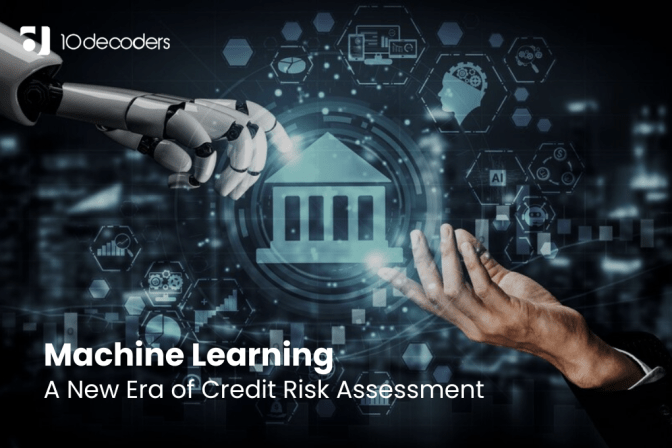Machine Learning: A New Era of Credit Risk Assessment
Credit risk assessment, the lifeblood of any lending institution, has long relied on traditional methods like scorecards and manual analysis. However, the emergence of machine learning (ML) is ushering in a new era of precision and efficiency, promising a seismic shift in how we evaluate borrowers and manage risk. This blog delves into the transformative role of ML in credit risk assessment, exploring its advantages, challenges, and implications for the future.
Traditional Methods and Their Limitations
Traditional credit scoring relies heavily on credit history, income, and employment data. While these factors paint a broad picture, they often fail to capture the complexities of individual borrowers and the dynamic nature of financial markets. Additionally, these models can be susceptible to bias, potentially leading to unfair lending practices.
Enter Machine Learning
Machine learning algorithms, armed with vast datasets and sophisticated algorithms, can analyse a wider range of data points beyond the traditional ones. This includes
- Alternative data: Social media behaviour, spending habits, and mobile phone usage can provide valuable insights into a borrower’s financial health and creditworthiness.
- Real-time data: ML can analyse dynamic data streams like market fluctuations and employment trends, allowing for a more responsive assessment of risk.
- Unstructured data: Textual data from financial documents or social media posts can be analysed to extract hidden patterns and indicators of risk.
By harnessing this diverse data, ML models can learn complex relationships between various factors, leading to
- Improved accuracy: ML models can achieve higher predictive power, leading to more accurate assessments of credit risk and better loan decisions.
- Early warning signals: ML can identify early warning signs of potential defaults, allowing lenders to take proactive measures and mitigate losses.
- Personalised lending: ML can personalise loan offers based on individual borrower profiles, leading to fairer and more inclusive financial services.
Unlocking Deeper Insights
Traditional credit scoring models often utilise limited data points, neglecting valuable information hidden within financial transactions, social media usage, and alternative data sources. ML, on the other hand, thrives on large datasets. Its algorithms can sift through vast quantities of data, identifying previously overlooked patterns and correlations that reveal a borrower’s true creditworthiness with greater accuracy. This allows lenders to move beyond static credit scores and consider a more holistic picture of an individual’s financial health, including income volatility, spending habits, and even digital footprints.
Personalised Loan Decisions
ML models go beyond binary approvals/rejections, paving the way for personalised loan terms tailored to individual risk profiles. By analysing a borrower’s unique characteristics and financial behaviour, ML algorithms can predict creditworthiness with improved accuracy, enabling lenders to offer competitively priced loans aligned with the borrower’s risk profile. This not only benefits responsible borrowers with lower interest rates but also expands access to credit for underserved communities traditionally excluded by traditional scoring models.
Enhanced Fraud Detection
Fraudulent loan applications pose a significant threat to lenders. ML algorithms, however, can analyse vast amounts of transaction data in real-time, identifying anomalies and patterns indicative of fraudulent activity. This proactive approach allows lenders to flag suspicious applications before losses occur, safeguarding their financial stability and protecting responsible borrowers from identity theft.
Challenges and Considerations
While ML offers immense potential, its integration into credit risk assessment isn’t without challenges. Concerns regarding data privacy, model bias, and explainability remain critical considerations. To ensure ethical and responsible use, lenders must adhere to stringent data protection regulations and implement robust bias detection and mitigation measures. Additionally, models should be developed in a transparent manner, ensuring explainability and facilitating regulatory oversight.
The Road Ahead
Despite the challenges, the future of credit risk assessment is undeniably intertwined with ML. As technology evolves and data availability increases, we can expect further advancements in model sophistication and accuracy. Collaboration between lenders, regulators, and data scientists will be crucial in unlocking the full potential of ML while mitigating associated risks. Ultimately, the future lies in a responsible and transparent integration of ML, ushering in a new era of personalised lending and secure financial transactions.
Conclusion
Machine learning is not simply a technological upgrade for credit risk assessment; it represents a paradigm shift. By analysing data that was previously inaccessible, ML empowers lenders to make informed decisions, expand access to credit, and combat fraud. However, its successful implementation requires a commitment to ethical data practices, bias mitigation, and model transparency. As we navigate this new era, responsible collaboration and a focus on human-centred AI will be essential in ensuring that ML not only revolutionises credit risk assessment but also fosters a more inclusive and equitable financial landscape for all.



